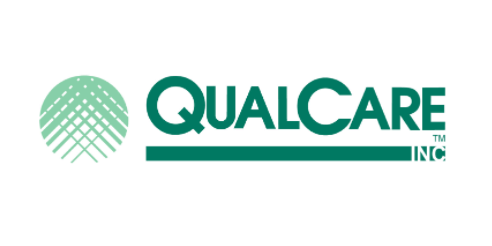Although your health is priceless, the reality of modern life is that most people need to consider how they’ll pay for their healthcare. We know how helpful it can be to have medical insurance cover your care, and also how frustrating it can be to try to figure out what your insurance actually covers.
Fortunately, insurance companies have taken notice of the abundance of scientific research supporting the effectiveness of chiropractic care, and so it’s common for health insurance to cover chiropractic. We’ve spent time working out agreements with insurance companies, so that we can accept insurance payments from as many of our patients as possible.
We accept the following insurance:






You can also use money from your HSA (health savings account) or FSA (flexible spending account) to pay for your chiropractic care, or for your copays or coinsurance.
Understanding health insurance
The world of health insurance can be confusing. Sometimes, it seems like insurance policies have been designed to make sure that no one can actually understand them! Because so many patients have questions about this, we’d like to offer a little guidance. Here’s a glossary of some common insurance-related terms.
A copayment, commonly called a copay, is required by most insurance companies when you make a covered visit to a provider in your network. You are asked to pay the copay, and then the insurance company will cover the rest of the cost of the visit. The copay is a flat rate, meaning that it doesn’t depend on the total cost of the visit, but is simply a certain dollar amount. It is due at the time of service.
For example, if your insurance covers your visit with us, and your copay for an office visit is $20, then you will owe $20 when you check in for your visit with us. After your visit, we will bill your insurance company for the rest of the cost of your visit, and you won’t need to worry about how much the total cost is or when it’s due. If you have an HSA or FSA, you are permitted to use money from that account for your copay.
A deductible is an amount that you must pay out-of-pocket each year for your medical treatment, before your health insurance will start to cover medical expenses. In general, the deductible applies to healthcare expenses other than outpatient office visits.
For example, if you have a $5000 deductible on your plan, then you’ll pay the first $5000 of medical expenses yourself. If your medical expenses exceed $5000 in a given year, then your insurance will cover the rest. However, once your deductible is met, you will still owe your copay for each routine office visit. Additionally, there may still be a cost-sharing requirement for your additional medical treatment, which is known as coinsurance.
Coinsurance requires you to pay a particular percentage of the cost of your healthcare. Generally, coinsurance begins to take effect after you meet your deductible.
For example, you might have a deductible of $2000, and coinsurance of 25%. This means you pay all of your healthcare costs up to $2000 in a given year. Once you hit that threshold, then for your medical bills after that for the rest of the year, you’ll pay 25% and your insurance will pay the rest.
Coinsurance sounds very similar to a copay, and it’s true that both of these are methods of cost-sharing that insurance companies employ. However, they are different. A copay is a flat fee, and is generally applied to an office visit to a healthcare provider. Coinsurance is a percentage of the total cost of your treatment, and generally applies to medical costs other than office visits.
Whether your visit to Dr. Barnes counts as an office visit involving a copay, or as treatment requiring you to meet your deductible and then pay coinsurance, depends on your insurance plan. You can always call your insurance company to ask about how chiropractic treatment is classified, or we can help you to understand this.
The out of pocket maximum is the maximum amount that you can be personally responsible for in health bills in a year. This includes deductibles and coinsurance combined. Once you have paid the out of pocket maximum, then you won’t be responsible for paying any more for health care during that year.
In some cases, your copays count toward your out of pocket maximum. However, some plans don’t count copays in that total, and you will continue to pay your copay for each office visit even after you reach your out of pocket maximum.
Keep in mind that the out of pocket maximum also does not include your premium. The premium is the payment that you make each month in order to be covered by health insurance. This isn’t considered a part of your healthcare cost. (If you’re employed full-time, your employer will usually cover a portion of your premium, though usually not all of it.)
You can use money from an HSA or FSA to pay for your care. These plans allow you to put pre-tax money into a special savings account, and you can then use this money to pay for healthcare services that aren’t covered by your insurance or to pay your share of your costs (copays and coinsurance). Because you don’t pay taxes on this money, using an HSA or FSA is like saving 25% or even more of the cost of your care.
Not all health insurance plans cover chiropractic care, and those that do may only cover it for certain conditions. For those plans that do cover chiropractic, you are often restricted only to “in network” providers. As mentioned above, we have invested time in working with insurance companies to become a part of many networks, to ensure that as many people as possible are able to access our services. Even if we’re “out of network” for you, you can use your HSA or FSA money for your treatment with Dr. Barnes.
What if I was injured in a car crash?
Injuries sustained in a car crash are a common reason for patients to seek chiropractic care, and it is often effective for these patients. In many cases, medical costs related to a car crash will be covered by car insurance. If your injuries are due to a car crash, and you have any questions about dealing with the car insurance company, please ask us about this. We want you to receive all of the benefits you deserve.
Chester Chiropractic Center
We understand how confusing and frustrating it can be to deal with health insurance! If you have any questions about your insurance plan and how much of your chiropractic care will be covered, please feel free to ask our friendly front desk staff, who have years of expertise in managing these issues.
Chiropractic is a very safe and effective way to manage many different health conditions, without the side effects that prescription drugs can cause. We’re committed to making this form of treatment as accessible as possible, and are happy to help you deal with your insurance company so that you can get the benefits of chiropractic.
Questions? Ready to schedule an appointment?


